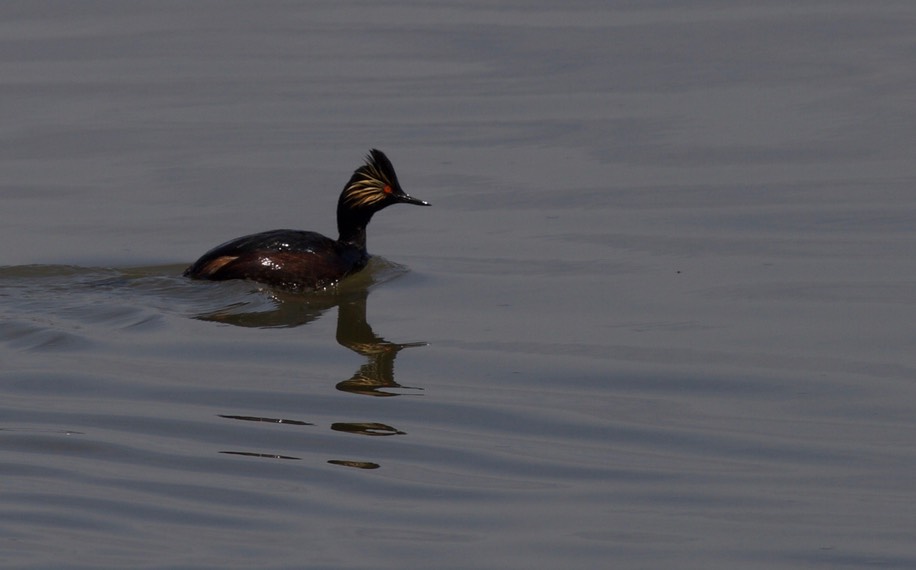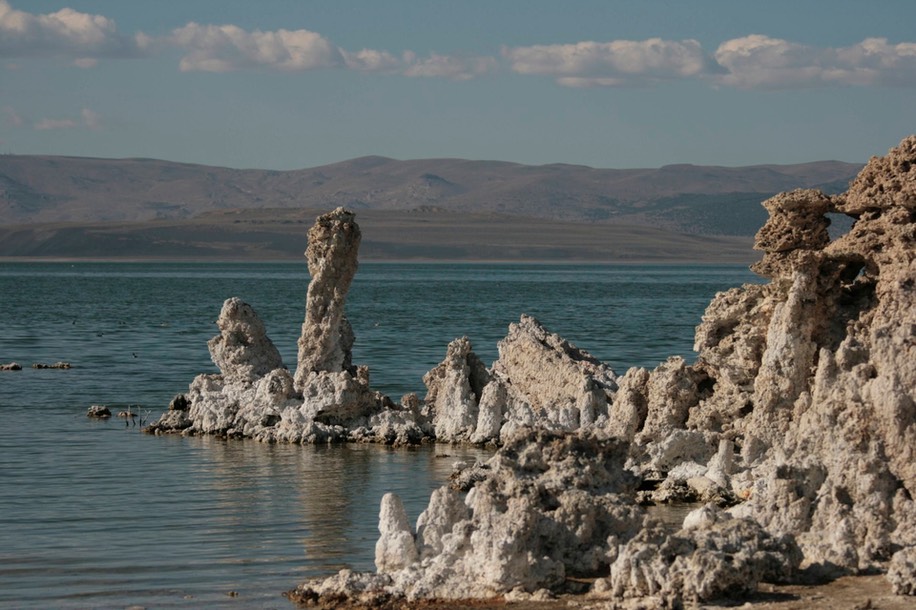
I lived in Southern California (near Riverside) for seven years and I have visited the state many times. I have searched out many corners of the state - but certainly not all of the sites. The North America portal page on this site has a listing of the species seen in volumes 3, 4, 7, & 8 of Birding the Western U.S. and Canada - those volumes include material from California. There is also a video portfolio of bird species, which includes material from California, The Birds of the United States and Canada.
The Birds of California, USA photo gallery includes several species.
The California Travel Photos gallery includes photographs from around the state, the California Flora photo gallery depicts a few of the states plants, and the California Fauna photo gallery depicts a few animal species photographed in the state.
A WILD CALIFONIA CONDOR
I was standing at a turnout near Mt. Pinos (California, USA) looking for a California Condor, there were only five wild birds in the world and they were scheduled for capture within a few weeks. I had driven down from Oregon with no real hope of seeing a Condor and circumstances were proving that what little hope I had was misplaced.
The sky was clear, the sun was bright, and I was enjoying the breeze. Suddenly, just a few feet in front of me a massive bird, a California Condor, floated up from the ravine and soared past on the thermals.
AMBOY CRATER & BRISTOL DRY LAKE
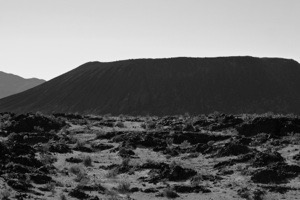
My first experience with a cinder cone happened in the 1960’s. I spent a hot summer night hiking across the lava fields that surround Amboy Crater (photo right). When you are young there is nothing like an unconsolidated cinder slope to get the heart rate up. In addition to being my first summit of a cinder cone, that night I miscalled the rattle of a rattlesnake (a sidewinder), thought it was a cricket of some type. It was the first time that I saw a Sidewinder. It scooted across the sand in the lava field directly toward my flashlight. Me and my flashlight departed unceremoniously.
After I obtained by BA in 1970 I loaded everything I owned into my Fiat 850 coupe and headed to Tennessee - I made it as far as Amboy dry lake where I blew a head gasket , in July, at 1:00 in the afternoon, in the middle of Bristol dry lake, an incredibly hot and desperate event. A friend came and hauled me back, rebuilt the engine, and I was on my way again.
So in 2007 it was pleasant to drive through with everything going well. There were flowers blooming in the lava fields of the crater, the sun was bright, and the air was warm. I stopped elsewhere along the route and drove up an old mining road to the foot of the hills, gathering jasper here and there as I went along. That same year, Rebecca and I stopped one night at Bristol dry lake to look at the salt mining operations by Element light. The process is relatively simple - the miners dig trenches, the ground water fills the trenches, the salt crystals form in the saline ground water, and they dig out the pure salt. Bristol Dry lake is next to Amboy Crater.
After watching salt crystals form, which is a lot like watching water bowl - meaning it can take days - we spent time looking at the Milky Way and a million stars. One light was visible on the ground, in Amboy several miles away.
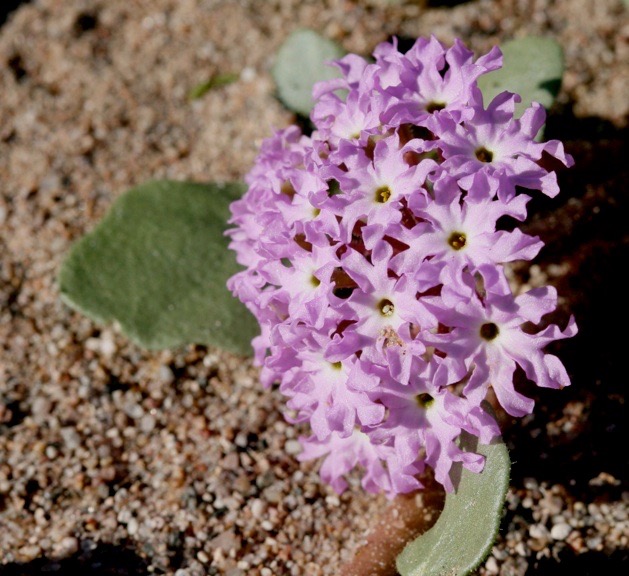
This Desert Sand Verbena (Abronia villosa) was photographed in the lava fields at Amboy Crater.
JOSHUA TREE
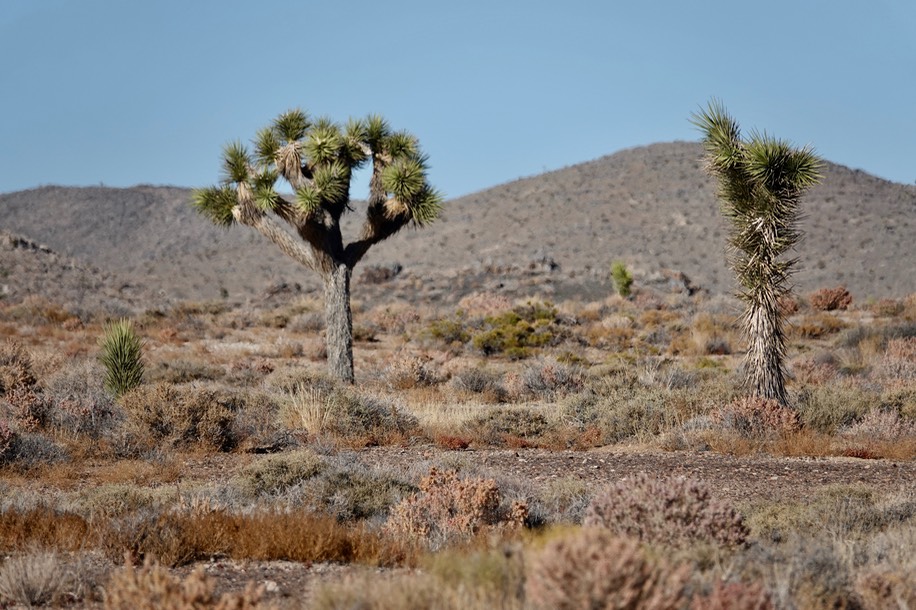
Joshua Tree - Yucca brevifolia - Joshua Tree National Park, California
Joshua Tree has always been one of my favorite places in California. When I lived there in the 1960’s I would often venture out to Joshua Tree (it was not a national park at that time) to climb the wonderful boulders and rock formations. Climbing was usually regulated to the winter months, much too hot in the summer. After work or school we would drive to the Monument, arriving well after dark we would find a camping spot, throw our sleeping bags on the ground and rise the next morning to glorious granite rock. On one occasion, I awoke to the feeling of a lot of weight, peeking out of my mummy bag I saw the world covered in white. A few inches of snow had fallen during the wee hours and the Joshua Tree wonderland was transformed into an entirely different type of wonderland.
DEATH VALLEY
(December 2006) Having finished our survey of some Arizona sites we returned northward - via Death Valley National Park. Just outside of the park we stopped a the China Ranch Date Farm and visited the Nature Conservancy Site which is at that location (photo below). The mud hills in the area come right up to the riparian zone here - desolation and a mecca for bird life all within a few feet of each other.
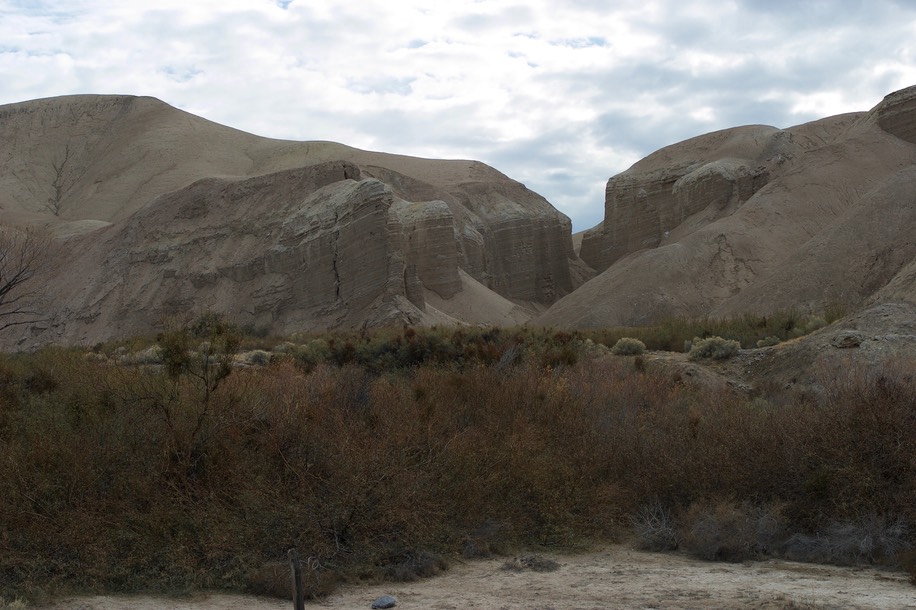
YOSEMITE
Last Friday night (September 26, 2014), Rebecca and I attended the showing of Valley Uprising as part of a climbing festival in Las Cruces, New Mexico. The early portion of the film dealt with climbing in Yosemite Valley during the 1960's and 1970's. I was doing a lot of rock climbing in southern California at the time (Big Rock, Joshua Tree, Tahquitz, and anything else with a face, chimney, or crack) -- it was a heady period. The Yosemite Decimal System for rating climbs, 5.8, 5.10, etc, was actually developed at Tahquitz.
The sport was becoming more popular at the time and equipment more sophisticated. I started with hemp rope and graduated to goldline. Kernmantle was just coming on the market and there was a lot of discussion about whether you could trust it and what its relative merits were, or were not. In my earliest days of climbing, rope was tied around your waist (no harnesses), body rappels were the norm, and pitons - when you could get them were Italian ring pitons. Later things got sophisticated (or weird). The photo below shows a well used bong and an Italian Ring Piton. Also in the arsenal were Lost Arrows (great gear), RURPs (Realized Ultimate Reality Piton), and cliffhangers. RURPs were the size of a (short) single-edge razor blade made out of steel, they had tiny holes to loop cord through and carabiners hooked into the cord. I never felt a RURP that I had placed was going to do anything and my most vivid memory of a bong was resting in a sling on a long overhand watching as the bong I had placed for the sling began to shift in the roof crack a couple feet above me, and then pull, right into my face - lots of blood and excitement. No one wore helmets, they were not available. Toward the final days of my California climbing, nuts, chocks, hexes, and cams started to appear.
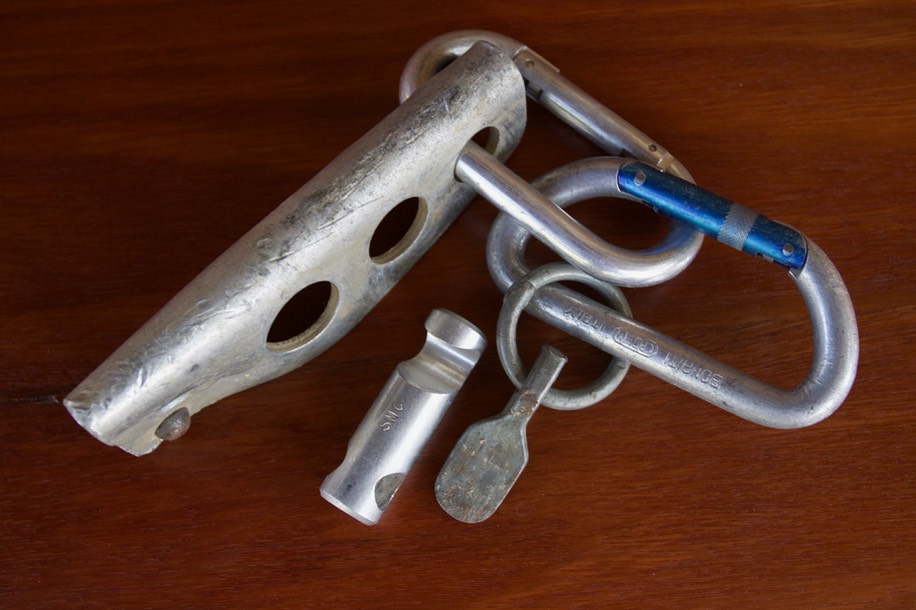
Climbing Equipment from days gone past
But climbing was never about the equipment, the fact that I only have a handful of gear left from those days - but the memories stretch for multiple-pitches, is proof of that. It was about the super sensitivity of the finger tips that develops from micro cuts when climbing on granite. It was about moving fluidly over rock. When you are moving on a large face it is all about you and the rock, there is nothing else (except maybe the weather).
In any case, the movie was about nostalgia, mine, and I enjoyed it immensely. But climbers who free solo big walls are crazy.
In 2007 Rebecca and I stopped in the valley for a visit. Between us it had been 60 years since Yosemite was in our experience - I visited last, much later in life, and have a vivid memory of the place, with lots of people. This time there were many fewer people and El Capitan, all 3,000 vertical feet of it, was just as imposing. A good situation. It was a hurried visit but there was time for photographs and I promised a visit to the Yosemite high country in the future.
MT. SHASTA
Rebecca and I were on our way to the Southwest (Arizona, New Mexico, and Utah) via California in September 2007. The quick way south from Portland, and that is what we are looking for, is I-5. It is freeway driving, there is pretty landscape occasionally, but it is still freeway driving. A stop at Cloverdale for olives and almonds -- more and more driving. But a better view of the mountain is from the east.
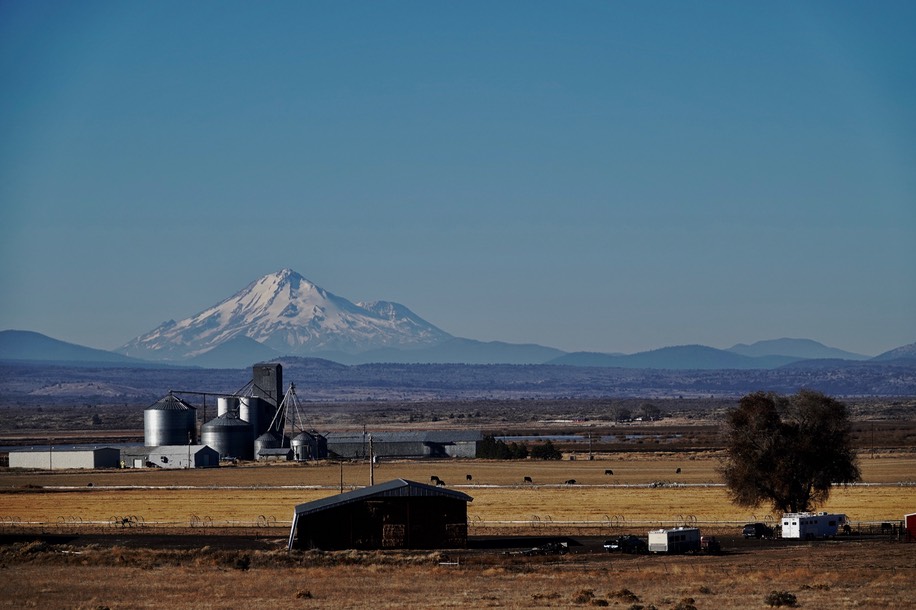
ANZA-BORREGO DESERT
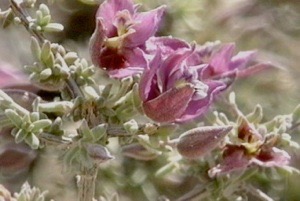
The photograph to the right was taken in the Anza-Borrego Desert in 2007. Plants are not my strongest topic and I had originally labeled this photo as Indigo Bush. When I went to post the photo it was obvious to me that it was not Indigo Bush - but what it was I did not know. I spent all day keying this species (Krameria erecta)-- all day -- a long frustrating day. I will remember this plant now and in retrospect, it’s a great reminder of my limits.
SAN DIEGO
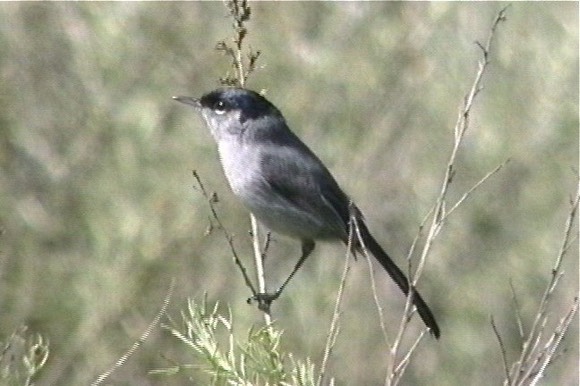
I took the photograph of a California Gnatcatcher (right) east of San Diego, between the city and the Anza-Borrego Desert.
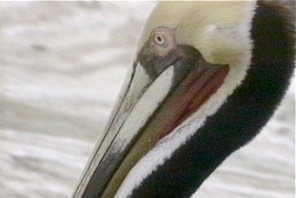
I can’t say that the Brown Pelican of the Americas, or any other Pelican for that matter, is a favorite species of mine. I am, however, always impressed by the combination of awkward stumbling ashore and the absolute elegance of a Pelican as it glides just above the waves - or across foothills - or along a salt pan...
All of the Pelican species which I have encountered share that elegance, the elegance of a large bird moving without effort (and let us forget, for the moment, about the sight of a large Pelican plunging from the sky into the sea as it fishes). There are other species, of course, which illustrate this phenomena - Albatross and Condor come readily to mind but in the non-bird world I compare it to a Grizzly Bear. A Grizzly Bear, when it is running across the rocky basin of a glacial river is an awe inspiring sight, such mass, such strength, such fluidity of motion.
A Pelican, as it slides through the air, has that fluidity of motion. But, when it plunges from the sky I am always a bit anxious - how can it keep from tearing its wings off? And, of course, a Pelican will never bring that fear of being eaten with it that a Grizzly Bear brings. The photograph of a Brown Pelican, above, as taken just north of San Diego.
SACRAMENTO NATIONAL WILDLIFE REFUGE
In 2007 I visited the National Wildlife Refuges north of Sacramento, California. I was able to get some photos but no video. On the photo map, there were Turkey Vulture (including the photo shown here), Bald Eagle, River Otter with a fish, White-faced Ibis, Yellow-billed Magpie, and Black-necked Stilt.
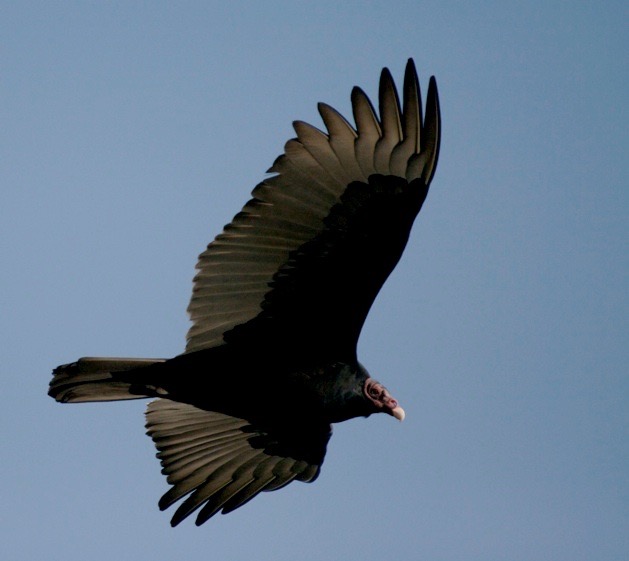
PINNACLES NATIONAL MONUMENT
In 2007 I stopped at Pinnacles National Monument to view my first “released” California Condor. Years earlier I had seen one of the last wild Condors and I thought it would create some symmetry to see one of the first birds released from the captive breeding program. I saw one of the released Condors, high up on a hill, far away. Somehow that seemed fitting, after the joy of seeing a wild Condor float by a few feet away it seemed right that this experience would be much less…
It was near Pinnacles that I took the following two photographs. The first of a Bobcat and the next of grossly overgrazed land.
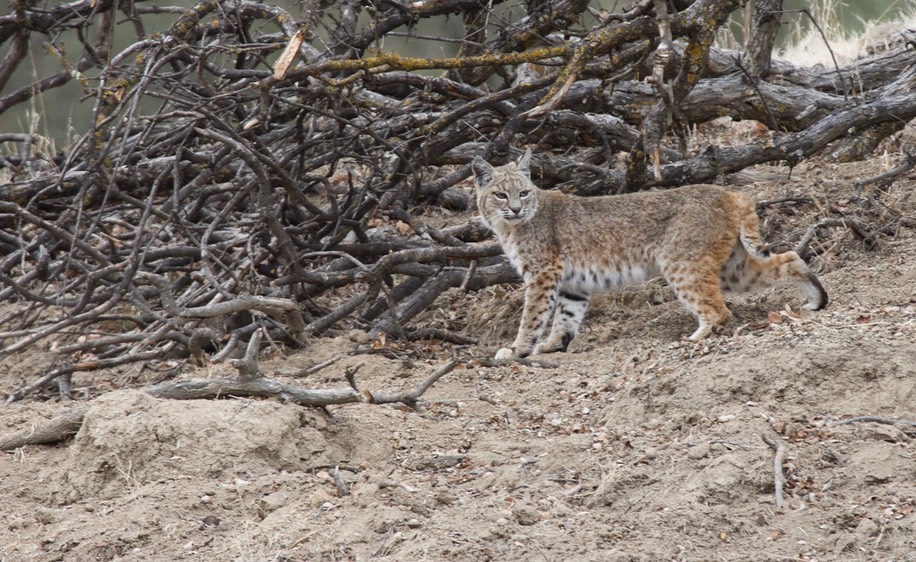
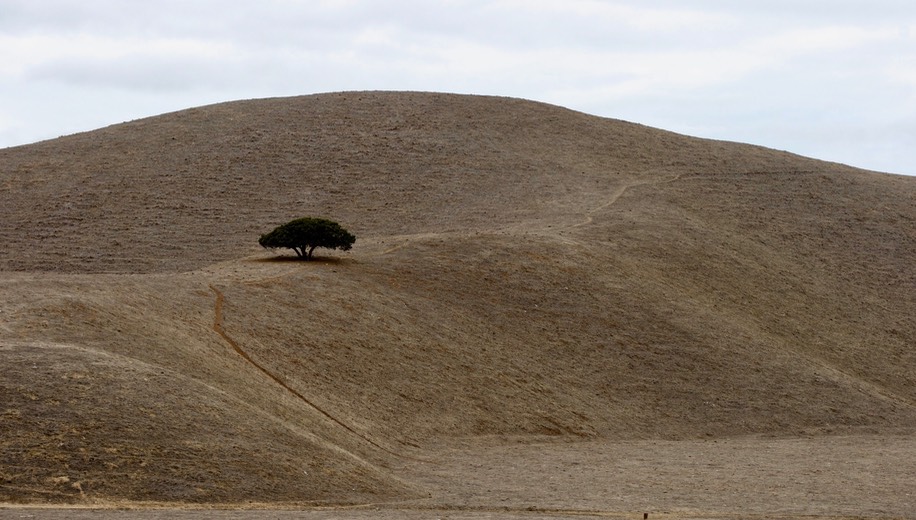
TULE LAKE NATIONAL WILDLIFE REFUGE
On May 2, 2008, I was at Tule Lake National Wildlife Refuge in northeastern California. The birds were a mix of skittish and sedate - some would swim away when the car got within 100 feet, others were much more accommodating, like the Eared Grebe, Podiceps nigricollis, shown below.
